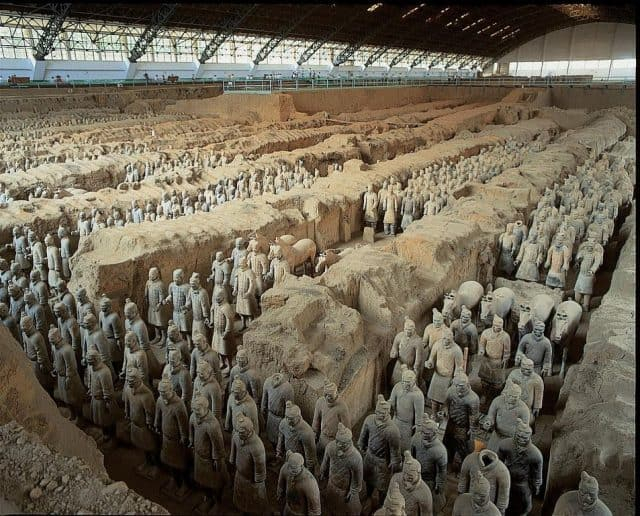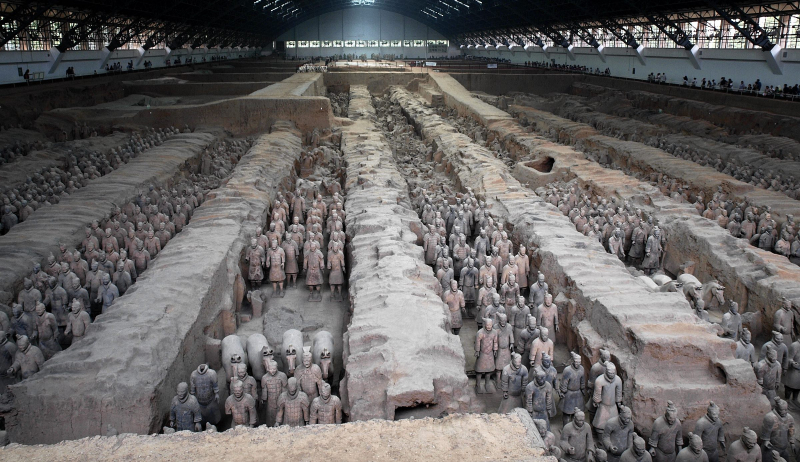Mausoleum of the First Qin Emperor

Mausoleum of the First Qin Emperor is a primary Chinese archaeological site near the ancient capital city of Chang’an, Shaanxi, China, now near the modern city of Xi’an. It is the burial place of the first sovereign emperor, Shihuangdi of the Qin dynasty (221–207 BCE), who unified the empire, began the construction of the Great Wall. He prepared for death by constructing a 20-square-mile (50-square-km) funerary compound, the treasures of which started to come to light only some 2,100 years after his death.
In March 1974, a work brigade of farmers drilling a well discovered an underground chamber that archaeologists later found contained an army of some 8,000 life-size terra-cotta soldiers and horses. Along with richly adorned chariots of wood and bronze; iron farm implements; bronze and leather bridles; objects of silk, linen, jade, and such weapons as bows and arrows, spears, and swords, cast from an unusual 13-element alloy.
The compound was declared a UNESCO World Heritage site in 1987. Archaeological excavations on the site continued into the 21st century, and archaeologists anticipated that it would take years to unearth the entire Mausoleum of the First Qin Emperor.
















